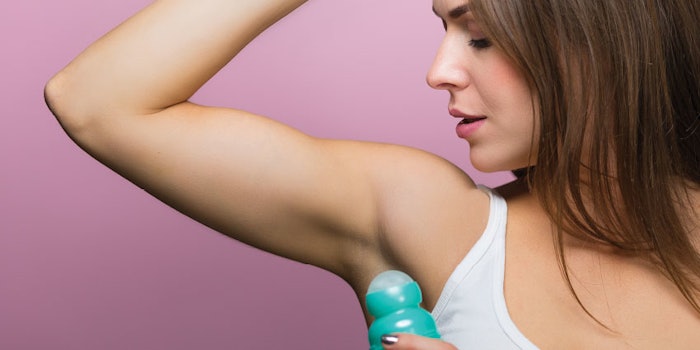
Read the full article in the March 2022 digital edition. . .
Editor’s note: Cosmetics & Toiletries is pleased to welcome the column, “Keeping Cosmetics in Check,” by Karl Laden, Ph.D., of Alpa Cosmetics. There, he is responsible for regulatory and technical matters for products imported and manufactured including brands from Beiersdorf, Chanel, Elizabeth Arden, Givenchy, Clarins, MAM Baby and more. Through this column, Laden points to industry practices, regulations, marketing, etc., to provide constructive criticism in a light-hearted tone that makes readers think. We hope you enjoy it.
The sale of products specifically intended to control underarm wetness and odor dates back a little more than 130 years. While the category has grown to over US $20 billion, there’s been a debate for some time as to whether these are necessary products. Even before deodorants were a category, Napoleon expressed his view in a letter from the battlefield to his wife, Josephine: “Home in 3 days, don’t bathe.”
Clearly, there was an awareness of body odors before deodorant products were developed—when bathing and perfumes were the only treatments available. However, discussion continues as to whether an aversion to body odor is a modern “invention” of advertising.
Studies have examined the physiological effects of body odor. Some even suggest it is involved in sexual attraction.1 So why is body odor generally considered bad?
In one well-researched article appearing in, of all places, Smithsonian Magazine,2 the author speculates it was advertising aimed at women that convinced them that using the product Odorono (odor, o, no) to control underarm wetness and odor was essential to their social success. Beginning in 1919, a bold ad appeared in The Ladies Home Journal that explicitly linked the social failure of women to body odor. In this case, it was clearly a campaign of fear that sold early products as it implied that unless someone told them, women didn’t know they smelled bad.
Two short excerpts taken from magazine ads for Odorono and Mum illustrate this. The Odorono ad states, “The most humiliating moment of my life [was] when I overheard the cause of my unpopularity among men.” It goes on to say the men were talking about her body odor.
The Mum ad gives the same impression. “There are so many pretty Marys in the world who never seem to sense the real reason for their aloneness. In this smart modern age, it’s against the code for a girl to carry the repellent odor of underarm perspiration on clothing and person. It’s a fault which never fails to carry its own punishment—unpopularity.”
Notably, in the early 1900s such products were not promoted for men because underarm odor was considered masculine. Were underarm odor and wetness actual concerns for women, or did fear promoted by advertising convince them their body odor was offensive to others (men, in particular)? And before the development of specialized products, was underarm odor and wetness considered “natural” and acceptable? This concept has been proposed by others. Interestingly, the COVID-19 pandemic might offer some clues to the answer; more on this later.
The entire antiperspirant and deodorant (AP/deo) product category provides a study in ingredients, packaging and regulations all aimed at treating a body location not usually associated with beauty. In the United States, deodorants are considered cosmetics whereas antiperspirants are regulated as over-the-counter (OTC) drugs. Deodorants function by inhibiting the growth of odor-generating Gram-positive bacteria in the axilla, or by masking the odor with another smell (e.g., perfume).
Antiperspirants are considered OTC drugs because they affect the structure and function of the skin by altering the output of sweat that reaches the skin surface. The current theory is they do this by forming a plug in the sweat duct that blocks the flow of sweat onto the skin.
. . .Read more in the March 2022 digital edition. . .
References
1. Rushing, S. (accessed Feb 1, 2022). Sexiness of stink: Historical attraction to body odor. Available at https://www.historicmysteries.com/sexiness-stink-attraction-to-body-odor/
2. Everts, S. (2012, Aug 2). How advertisers convinced Americans they smelled bad. Available at https://www.smithsonianmag.com/history/how-advertisers-convinced-americans-they-smelled-bad-12552404/











